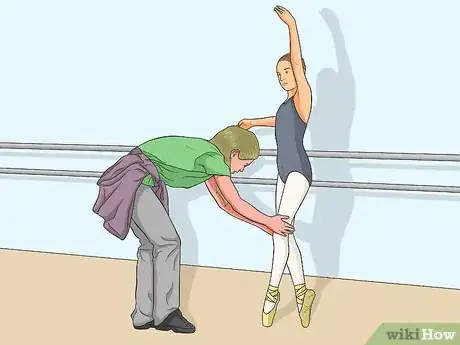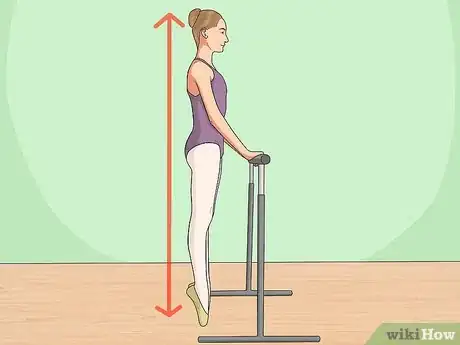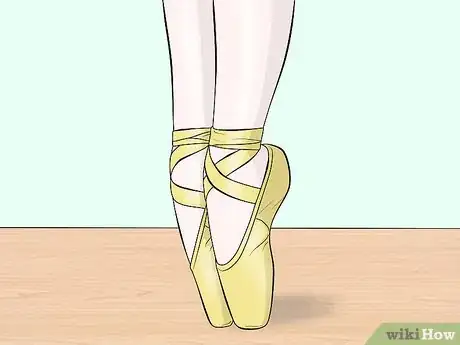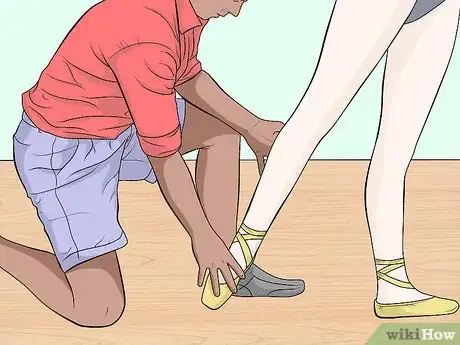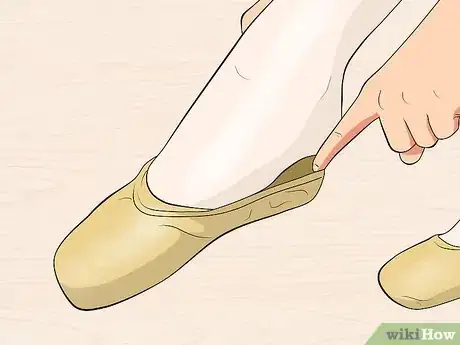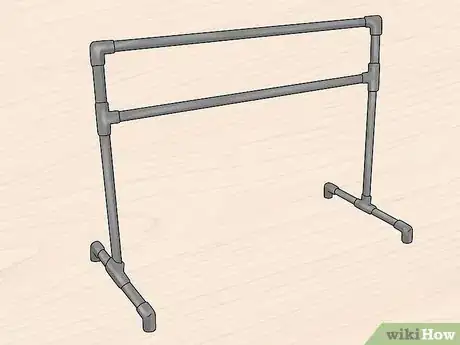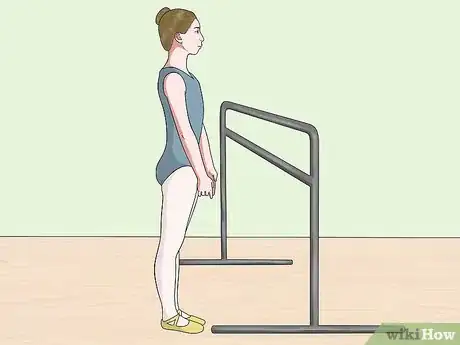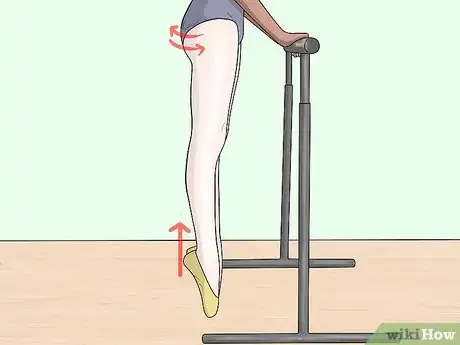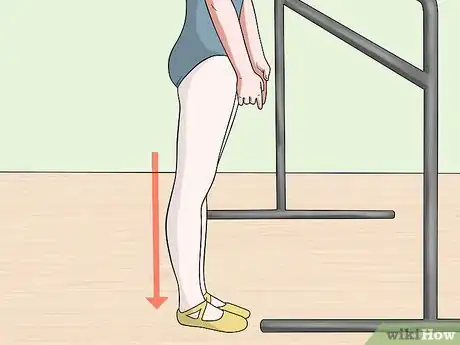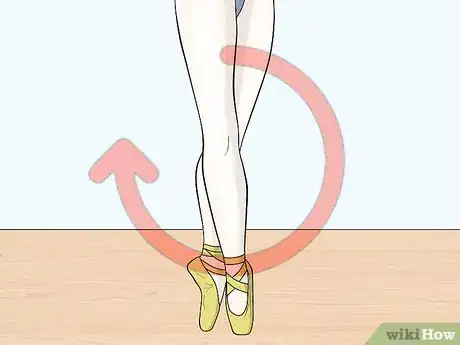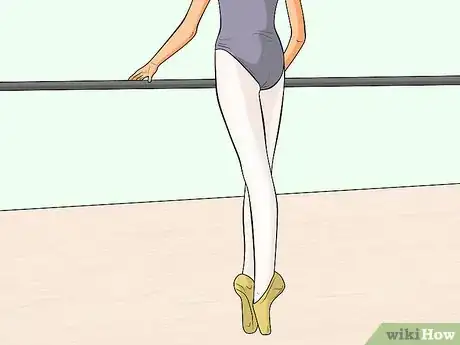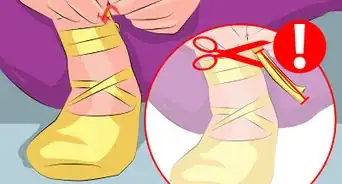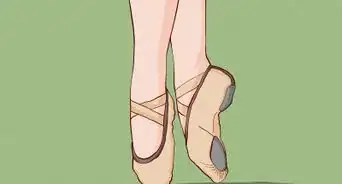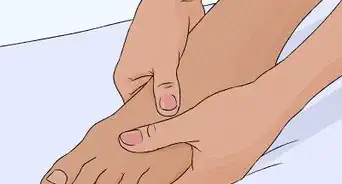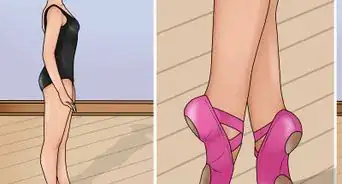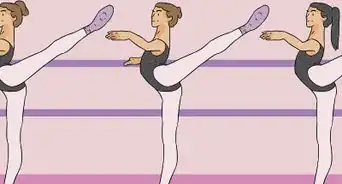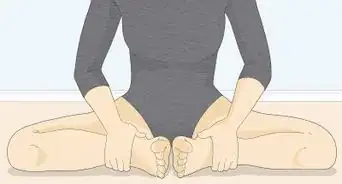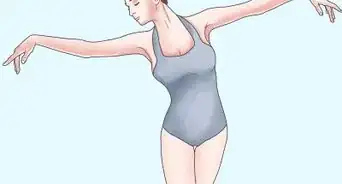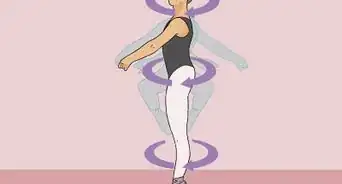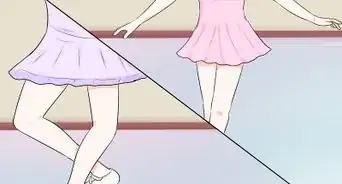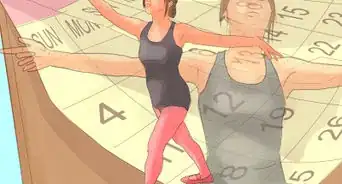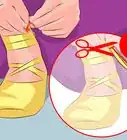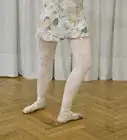This article was co-authored by Geraldine Grace Johns. Geraldine Grace Johns is a Professional Ballerina and the Owner of Grace Ballet in New York and Los Angeles. Geraldine toured through New Zealand, Australia, Japan, and Korea as Jammes in Ken Hill's Original Phantom of the Opera. She has studied with the Royal Academy of Dance in London to become a teacher and taught for the Kudo School of Ballet in Yokohama. Geraldine also ran her own Royal Academy of Dance School in New Zealand before studying at the Neighborhood Playhouse School of the Theatre in New York City. Geraldine was a guest coach and Master Class teacher in Toronto for the Canadian Royal Academy of Dance's Dance Challenge in 2018, 2019, and 2020. She was also a guest coach and Master Class teacher for the USA Royal Academy of Dance Challenge in Long Beach, California in 2019 and 2020. Grace Ballet Los Angeles has won recognition as one of 13 Best Ballet Schools in Los Angeles since opening her school. Geraldine is a contract Practical Teaching Supervisor for the Certificate in Ballet Teaching Studies for the Royal Academy of Dance.
This article has been viewed 50,962 times.
It's every young girl ballet student's dream to one day dance on the tips of her toes, leaving audiences breathless. But before audiences can be amazed, years of pointe training in a studio must take place, and before that, the feet must be made ready to take on the demands of pointe work. If you desire to dance en pointe, you'll need to work hard to make your dream a reality.
Steps
Gaining Sufficient Strength
-
1Have your ballet instructor assess your current strength. You cannot try this unless you are strong enough to be en pointe. Listen to what your instructor has to say and do not attempt the en pointe work until he or she states that you are ready.[1]
-
2Develop the strength necessary for pointe work. The feet and ankles need to be strong, with the ability to control the joints in these areas being equally important. Rising to pointe and lowering back down depend on it. The ankles also need to be stable to support a sustained balance on your toes. Strong calf muscles are also required to pull off these skills. Each of these things can be achieved through the exercises done in ballet class. It also helps to have a solid core, which can be gained from ballet.
- Pilates is another excellent way to strengthen the core, if dancing itself isn't doing that for you.
Advertisement -
3Maintain a healthy weight. Being overweight while dancing on pointe could lead to health problems, because it puts too much pressure on the toes. You may damage your ankles or, even worse break or fracture them, which will mean that you will have to leave off training for a sufficient amount of time; weeks, maybe even months depending on the injury. Over that time, your strength, skill, and flexibility, for example, will have deteriorated. This can also mean that you will be back at square one and it will take you even longer to be able to stand on en pointe.
Perfecting Technique
-
1Take two to three classes per week. This will help to improve technique and learn as much as you can. Practice every step correctly, knowing it will transfer to your pointe work eventually.
- It's common to study ballet for at least two to three years in soft shoes before going on pointe.
-
2Learn proper alignment. This is the way the body parts are lined up over each other during movement. This is vital for being safe and avoiding injuries on pointe.
-
3Focus on the ability to hold the turnout from your hips while carrying out every step.
-
4Ensure that you have strong releves. The releve must include the ability to balance on demi pointe while keeping the ankles still. This ability is extremely important.
-
5Seek guidance. Speak to a knowledgeable and trusted source, such as your ballet teacher. Ask them what you personally need to do to reach your goal of being on pointe. Let him or her know that you're serious about it.
Going en Pointe
-
1Learn under the guidance of your instructor. The following must be done under instruction and in the presence of your dance teacher. Do not attempt to go en pointe without qualified assistance.
-
2Put on your pointe shoes. The shoes should have been properly prepared beforehand, with the ribbons and elastic attached as required. Once you have the shoes on, make sure that the elastic and ribbons are properly attached to your legs.
- Ensure that your dance instructor has approved the shoes before using them.
- The block end of the shoe is known as the box or the block. It is this end that you will be standing on.
-
3Go over to the barre (or a secure table or counter of about the same height).
-
4Stand in first position. Remember your turnout. This is very important in preventing injuries and becoming stronger in dance. Maintain the correct ballet posture - open chest, pulled back shoulders, etc. Try to "lift" out of your hips and towards the ceiling, don't relax into that position.
-
5Get ready to stand on pointe. Squeeze your legs together as tightly as you can. Pretend there is a dollar bill between your thighs and you don't want to drop it.
-
6Use your core and butt muscles to "lift out" of your shoes. Start to do a relevé, and stop once you are on demi-pointe. Now is when the fun starts: Squeeze your butt as if your life depends on it to get en pointe.
- When you go up, go up all the way up onto the box. If you don't, you can seriously injure your ankles because of the extra strain it puts on them.
-
7Continue to squeeze as you stay en pointe.
-
8Come down. Once you are ready to come down, squeeze your butt even more to control the way you come down. This is a relevé.
-
9Continue to do the relevés to build up your leg and butt strength.
-
10Practice. Once you are pretty strong in your legs, you will (most likely) be able to do some fun, sassy walks on pointe. Once you're confident and comfortable with the basics, you'll enjoy doing the moves from "center stage"––as long as you are prepared enough to do so!
Community Q&A
-
QuestionMy turnout is very good on flats and I can hold it, but when I relieve I lose a lot of it. Are there any exercises I can do to help with this?
 Community AnswerThere are a few things you can do. In each position, do a few eleves (they are like releves, but you don't plie), making sure you are at the maximum turnout. Squeeze your butt cheeks when you go up. This will help you maintain your turnout. Also, make sure that you are turning out from your hips, and not your knees or ankles.
Community AnswerThere are a few things you can do. In each position, do a few eleves (they are like releves, but you don't plie), making sure you are at the maximum turnout. Squeeze your butt cheeks when you go up. This will help you maintain your turnout. Also, make sure that you are turning out from your hips, and not your knees or ankles. -
QuestionCan I learn to do this in a few days?
 Lhowl8Community AnswerYou need years of training to go en pointe. If you are not strong enough (that is, not able to use the muscles in your feet and legs to keep yourself from "sagging" while en pointe) you can do serious damage to your joints. Even if you are strong enough to go en pointe, most people take weeks to months to be able to balance steadily.
Lhowl8Community AnswerYou need years of training to go en pointe. If you are not strong enough (that is, not able to use the muscles in your feet and legs to keep yourself from "sagging" while en pointe) you can do serious damage to your joints. Even if you are strong enough to go en pointe, most people take weeks to months to be able to balance steadily. -
QuestionDo you have break your toes in order to stand on your tippy toes?
 Community AnswerNot at all. It's hard on your toes, but they do not get broken from being danced on.
Community AnswerNot at all. It's hard on your toes, but they do not get broken from being danced on.
Warnings
- After buying your first pair, resist the temptation to dance in them at home. Wait until your first pointe class to wear them. Some exercises may be okay to try at home, but always ask the teacher first. Never try anything on your own that you haven't done in class. It is necessary for you to have a teacher to avoid permanently injuring yourself.⧼thumbs_response⧽
Things You'll Need
- Pointe shoes
- Clothes that are easy to dance in
- Something secure to act as a barre
References
- ↑ Geraldine Grace Johns. Professional Ballerina & Ballet Instructor. Expert Interview. 11 November 2020.
